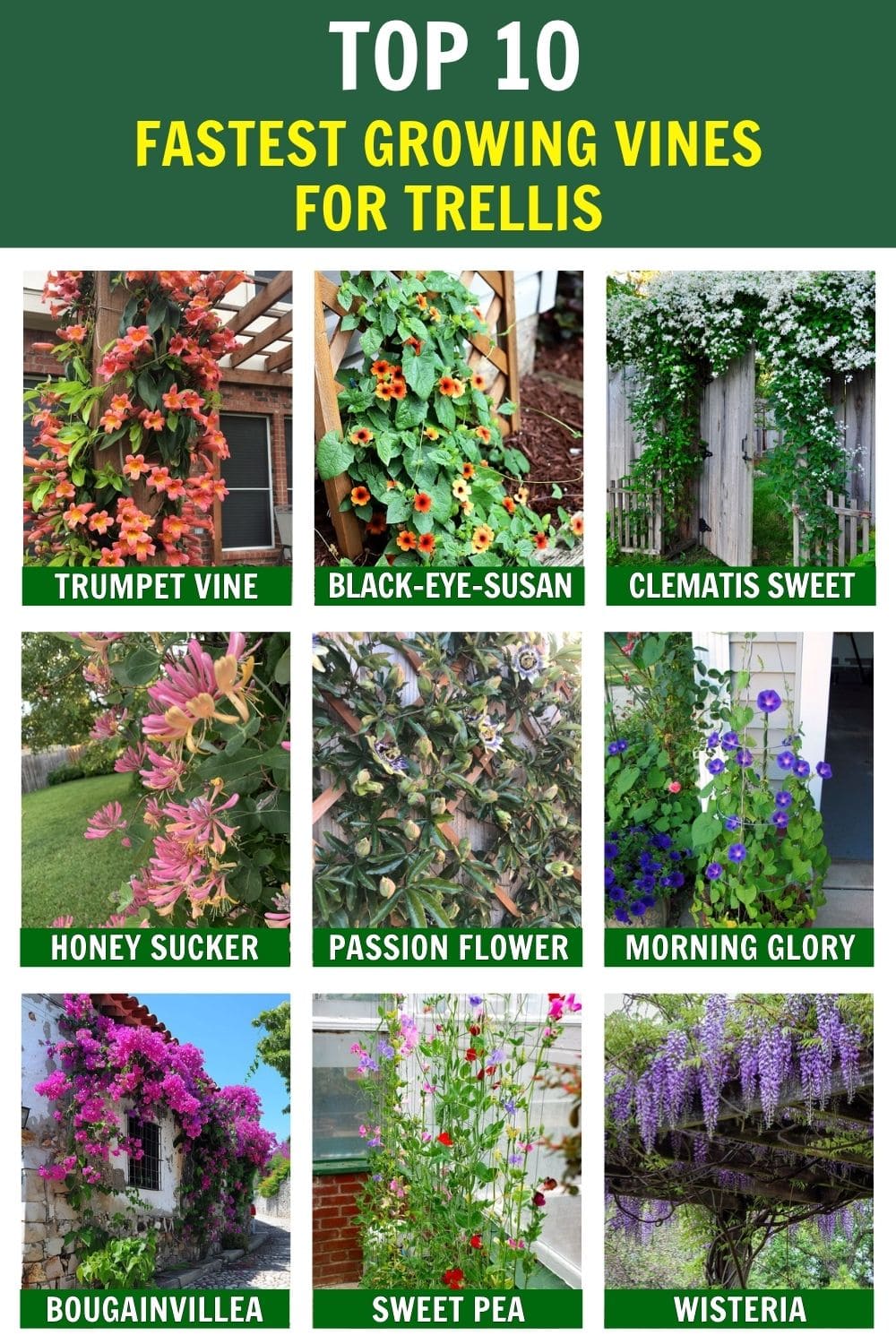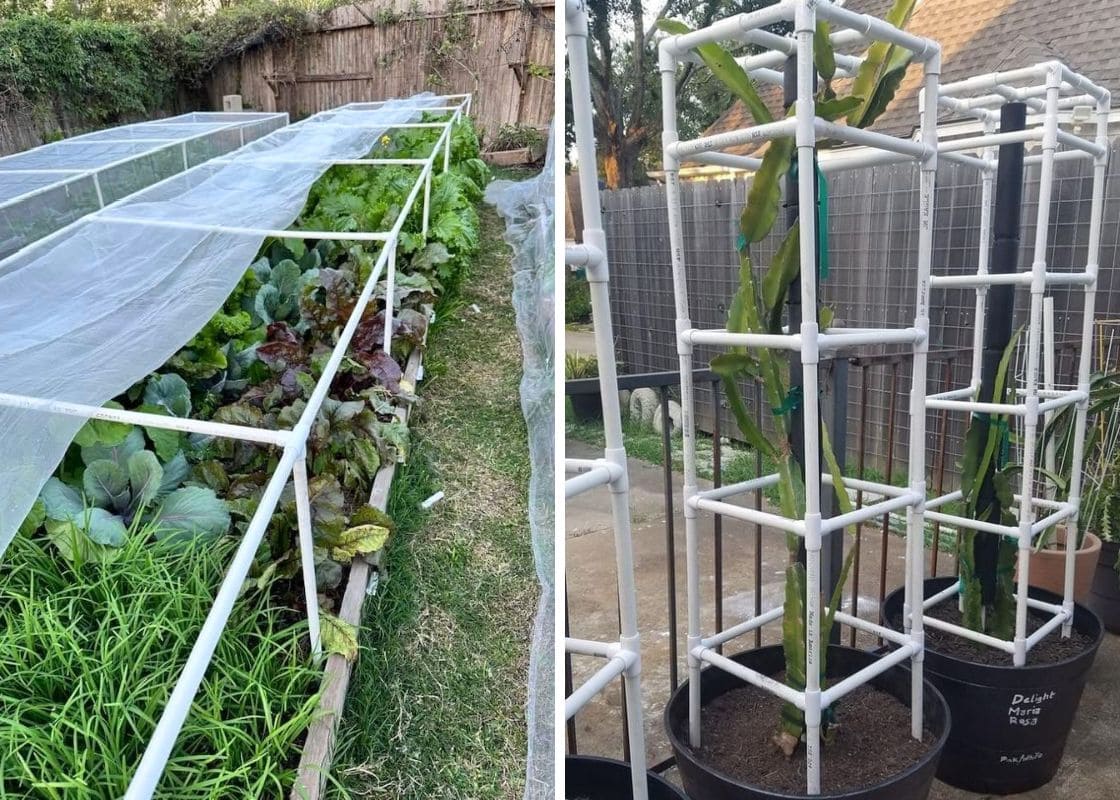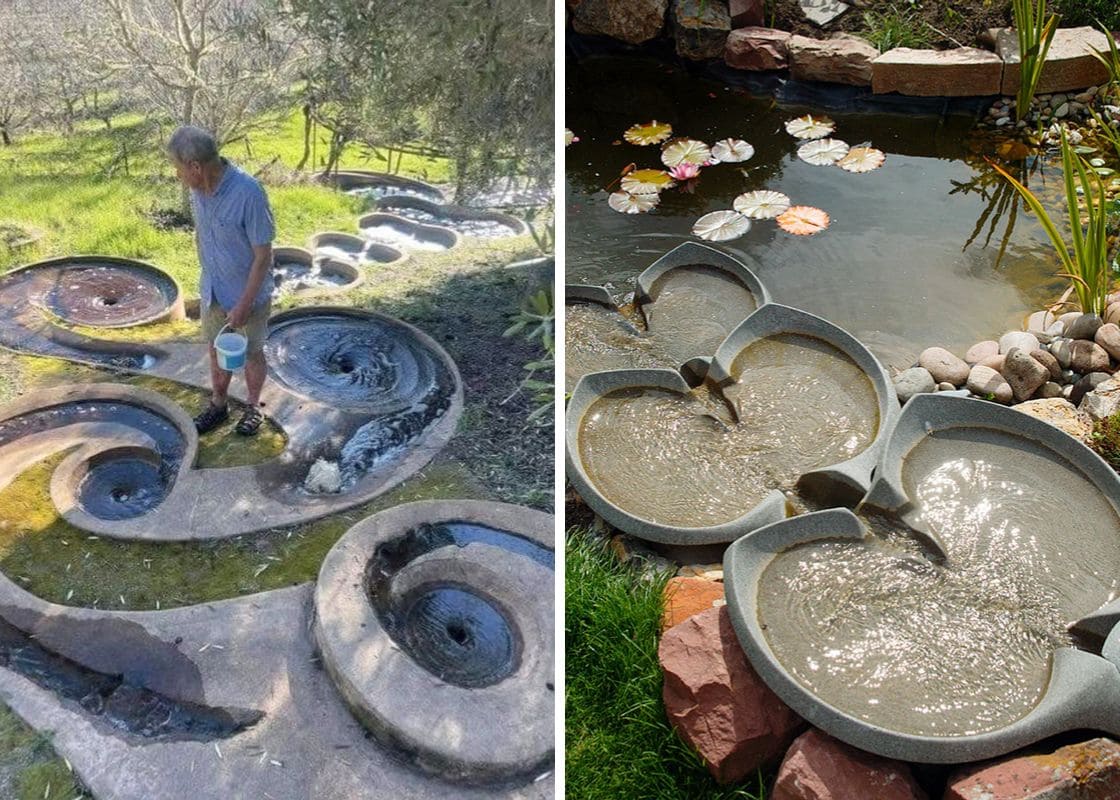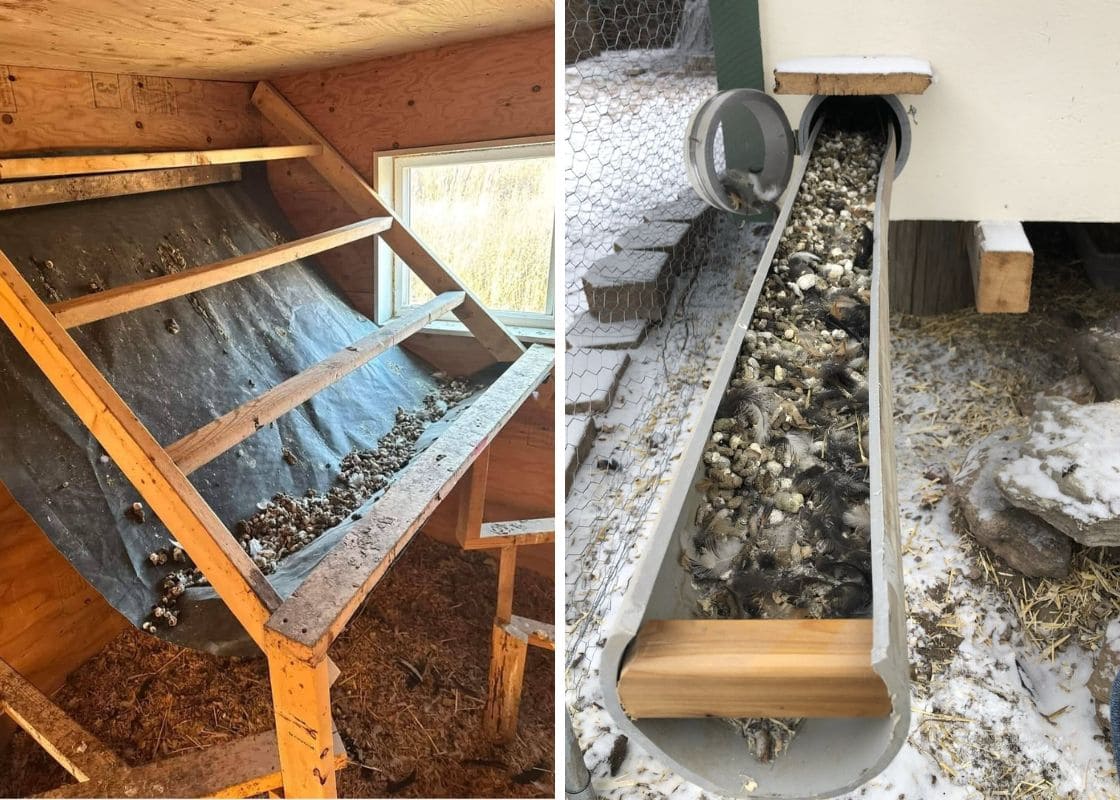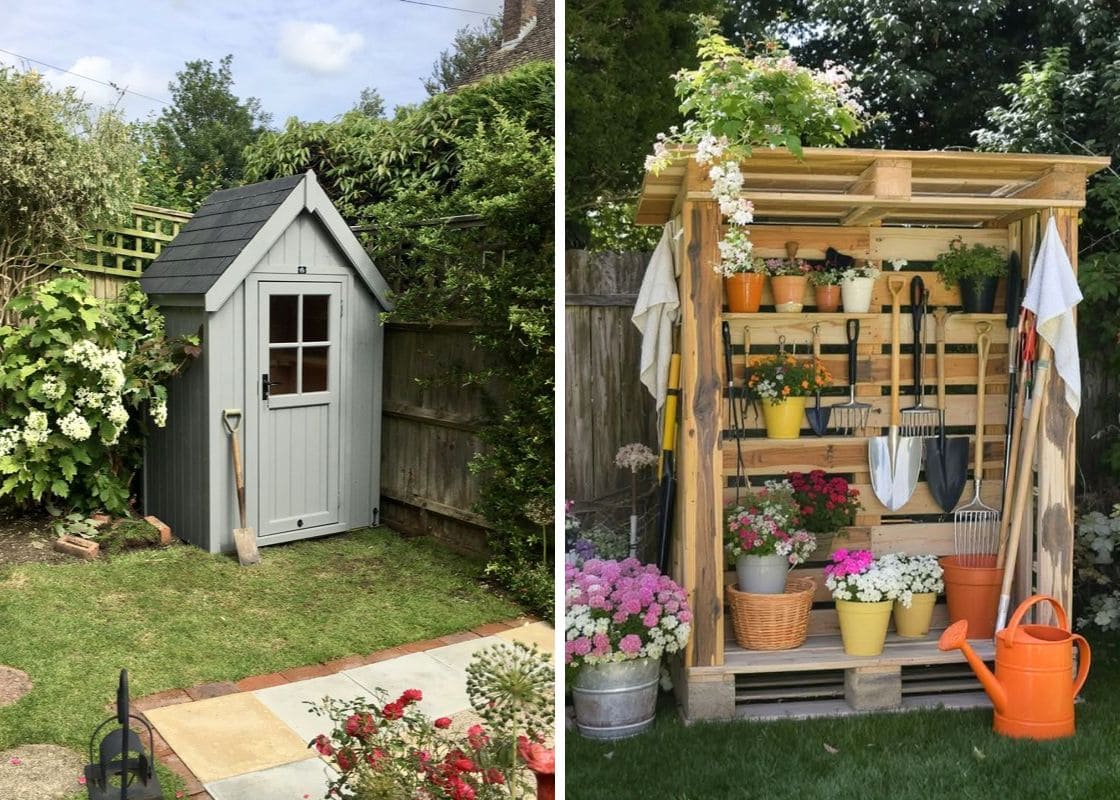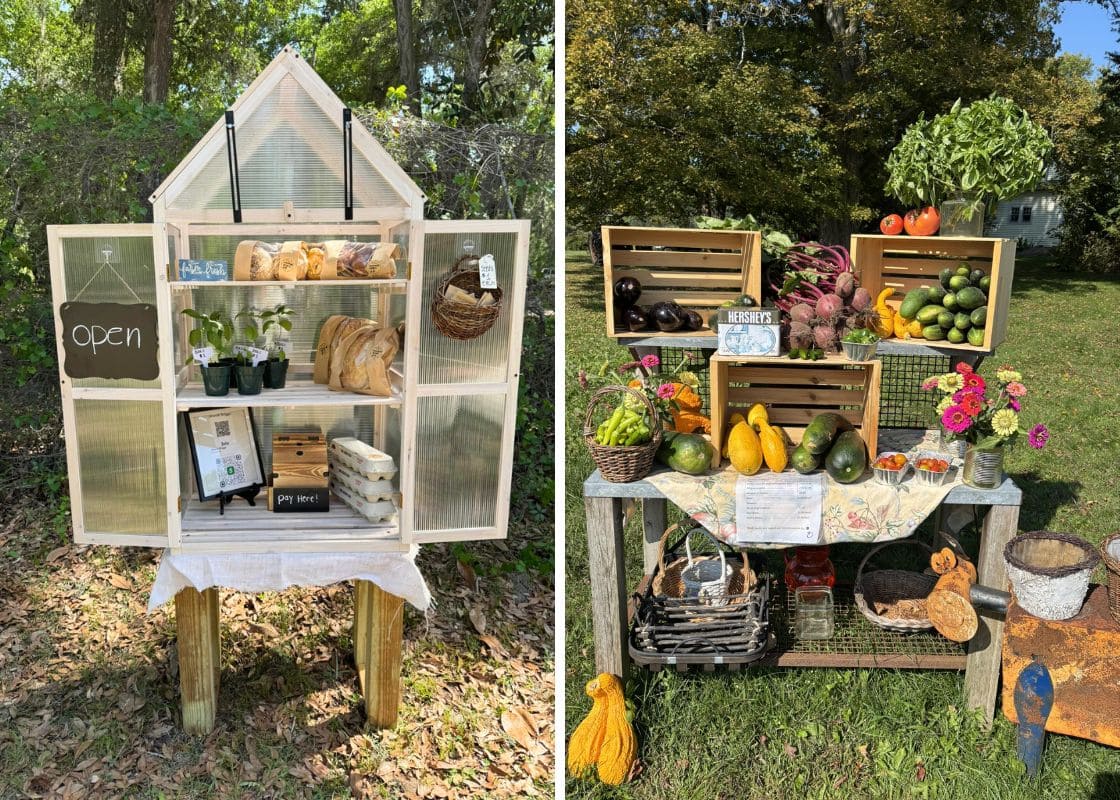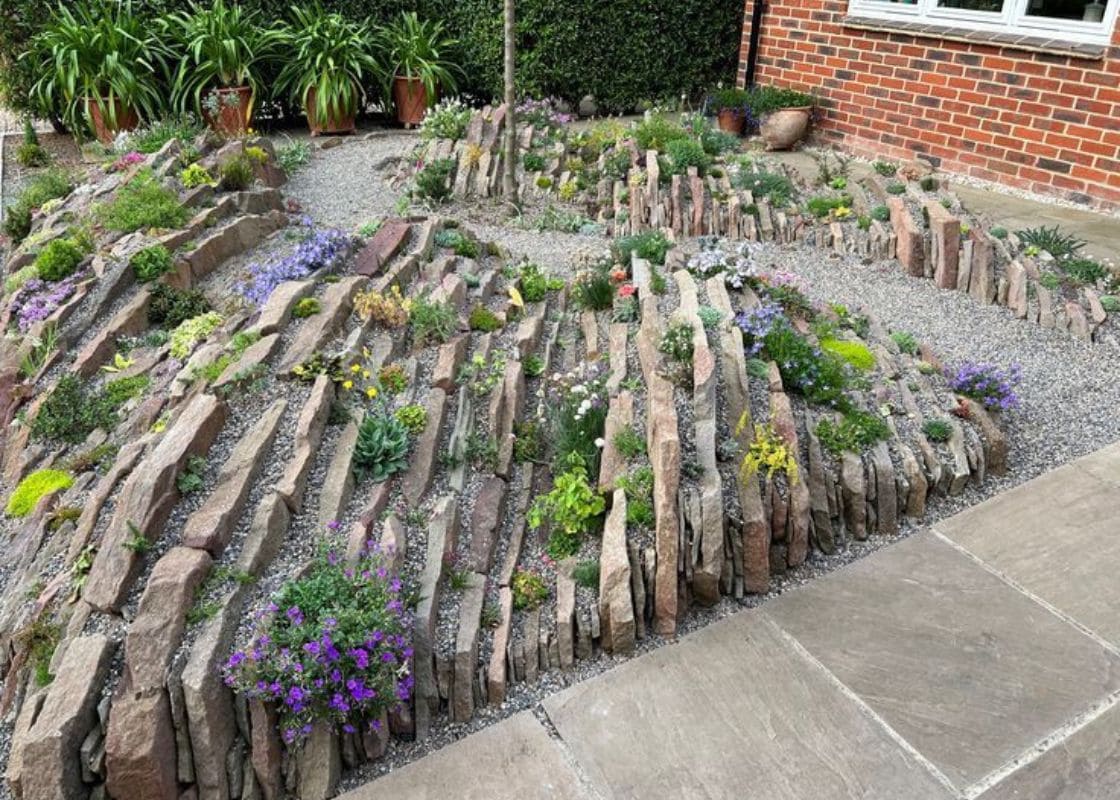If patience isn’t your strong suit or your garden view needs a quick fix, fast-growing vines are your best friend. These climbers don’t just fill space; they bring it to life with blooms, fragrance, and lush greenery in a single season or two.
Whether you’re hiding an old fence, greening up a pergola, or creating a cozy garden nook, the right vine can transform it fast and beautifully.
I’ve planted most of these on my own trellises, from sweet peas twirling gently in spring to the bold takeover of trumpet vine by midsummer. Some vines are delicate charmers, others are wild show-stealers, but all share one trait: they grow fast.
1. Clematis Sweet Autumn
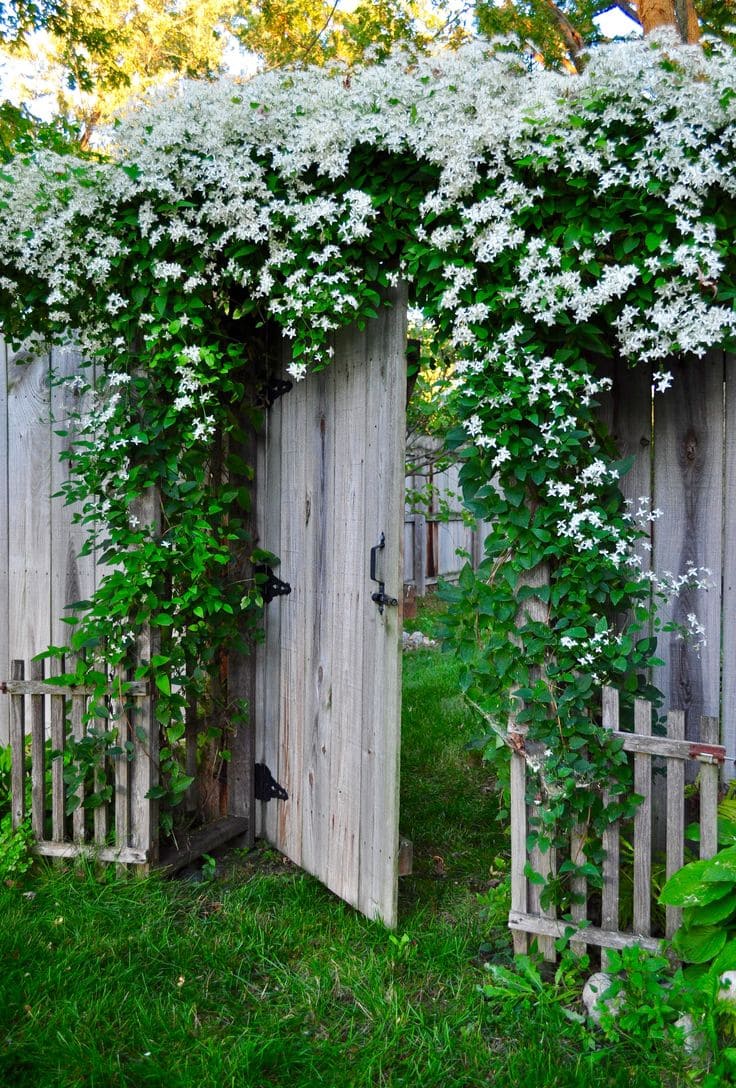
- Botanical name: Clematis terniflora
- Growth rate: Up to 20-30 feet per season
- USDA hardiness zones: 5-9
- Growth habit: Twining perennial vine
Sweet autumn clematis is one of those vines that sneaks up on you. By mid-summer, it’s a leafy cascade climbing everything in its path, and by early fall, it bursts into thousands of tiny white star-shaped blooms with a light, sweet fragrance.
It climbs fast making it a favorite for arbors, trellises, and fences where you need quick coverage. It thrives in full sun to part shade and likes well-drained soil.
Once established, it’s low-maintenance, you just cut it back hard in late winter or early spring to control size and encourage dense regrowth.
I’ve used it to cover an old chain-link fence in just two seasons, and it transformed the space. Bees and butterflies love the late blooms, and it even puts on a bit of golden fall color.
2. Black-Eyed Susan Vine
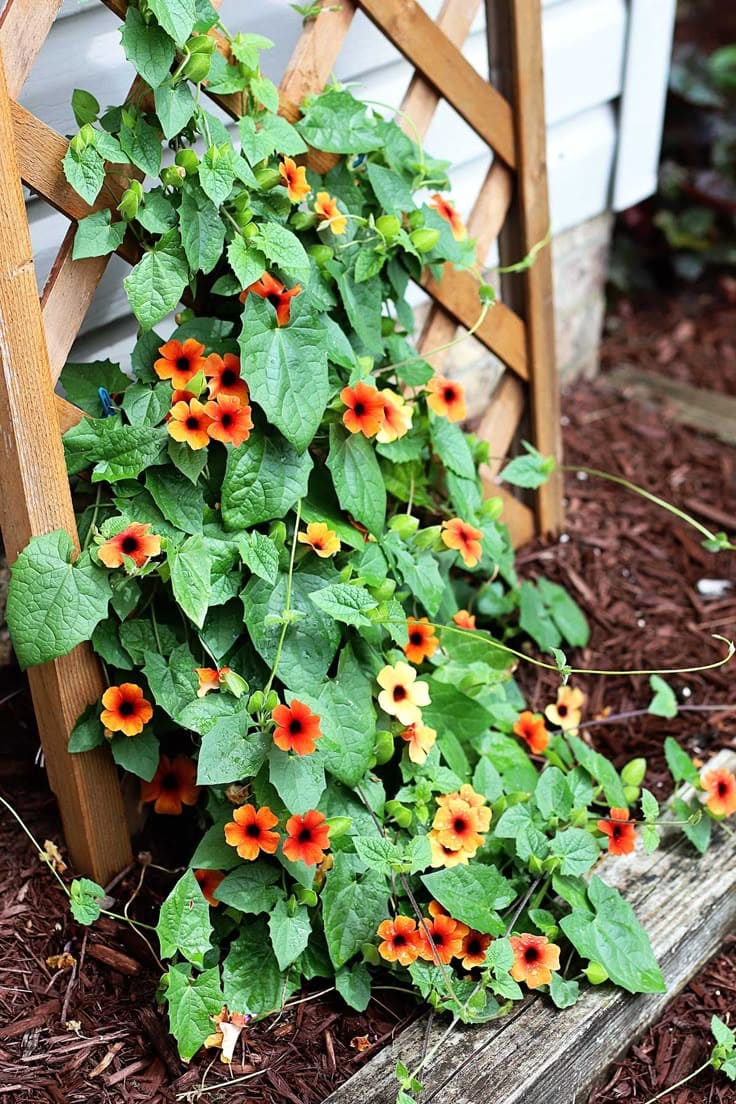
- Botanical name: Thunbergia alata
- Growth rate: 8-10 feet in one season
- USDA hardiness zones: 9-11
- Growth habit: Twining annual vine
If you want instant charm on a trellis, black-eyed susan vine is my go-to. It’s fast, bright, and incredibly cheerful with its orange, yellow, or white blooms, each marked by a dark center eye.
I love growing it from seed or small starts in early spring as it’s quick to take off and starts climbing almost immediately. It thrives in full sun and rich, well-draining soil, with regular watering during hot spells. It wraps around supports with ease, so no tying is needed.
I often grow it in containers with a bamboo obelisk or up a sunny fence. It’s a seasonal stunner, but don’t expect it to overwinter unless you’re in a warm zone.
The color show lasts until frost, and it attracts butterflies in droves. Plus, it’s compact enough for small spaces, making it perfect for balconies or patios.
3. Trumpet Vine
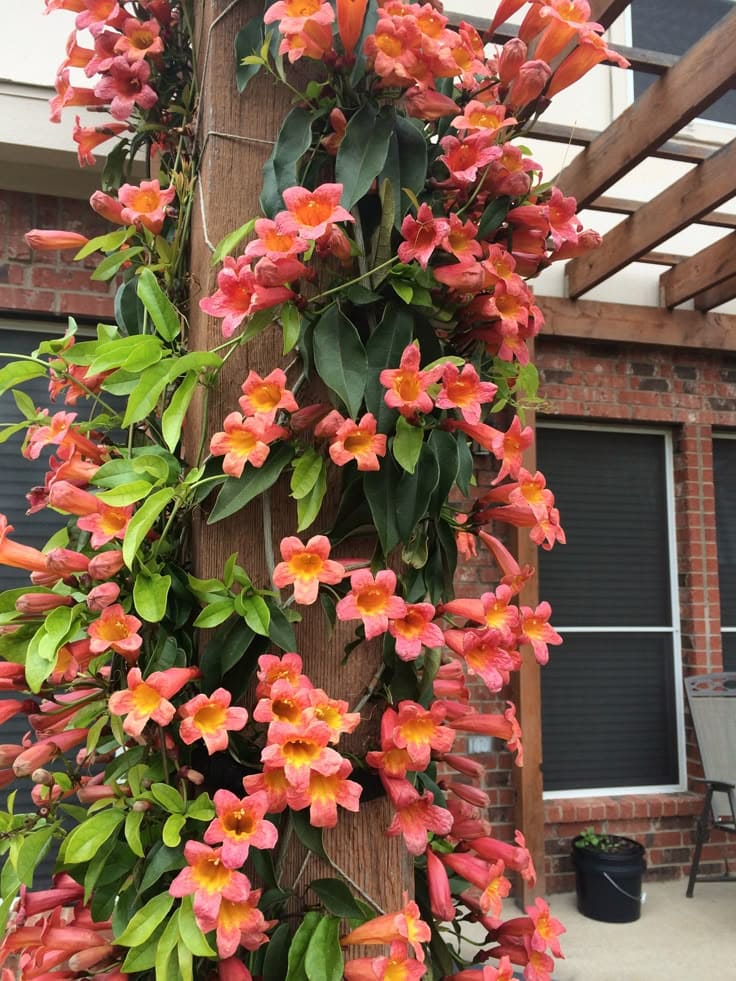
- Botanical name: Campsis radicans
- Growth rate: Up to 40 feet in one growing season
- USDA hardiness zones: 4-9
- Growth habit: Woody, fast-growing perennial vine
Trumpet vine is bold, aggressive, and not for the faint-hearted gardener but when you need fast coverage and drama, it delivers. With bright red-orange trumpet-shaped flowers and thick, woody stems, it can shoot up a trellis, arbor, or pergola with shocking speed.
It thrives in full sun and tolerates most soils, even poor ones. Once established, it needs little water or care except pruning, which is essential to keep it in check.
I usually cut mine back in late winter to prevent it from taking over. Hummingbirds absolutely love it, and I’ve seen entire trellises humming with activity during bloom season.
Also, don’t plant it near delicate structures or too close to the house as it has strong roots and can sucker. But in a tough spot where nothing else thrives, it’s practically unstoppable and undeniably impressive.
4. Morning Glory
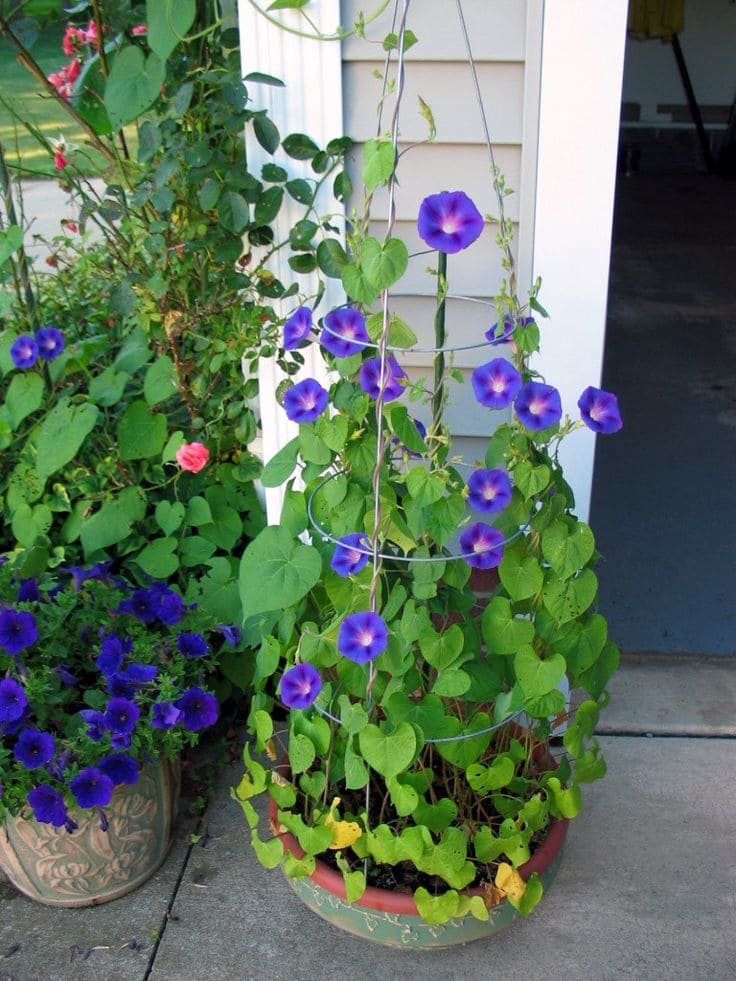
- Botanical name: Ipomoea purpurea
- Growth rate: 10-12 feet or more per season
- USDA hardiness zones: 2-11
- Growth habit: Twining annual vine
Morning glory is a classic summer climber that never fails to bring a smile. It starts from seed and rockets up trellises, fences, or string lines within weeks, producing a waterfall of heart-shaped leaves and vivid, trumpet-shaped blooms in blues, purples, or pinks.
It loves full sun and moderately moist soil, and it’s happiest when the weather heats up. I often use it as a temporary screen or to hide an unsightly shed wall.
It doesn’t need much attention, just a little guidance early on and consistent watering. Be aware that it self-seeds heavily, so you might find volunteers next year.
5. Passionflower
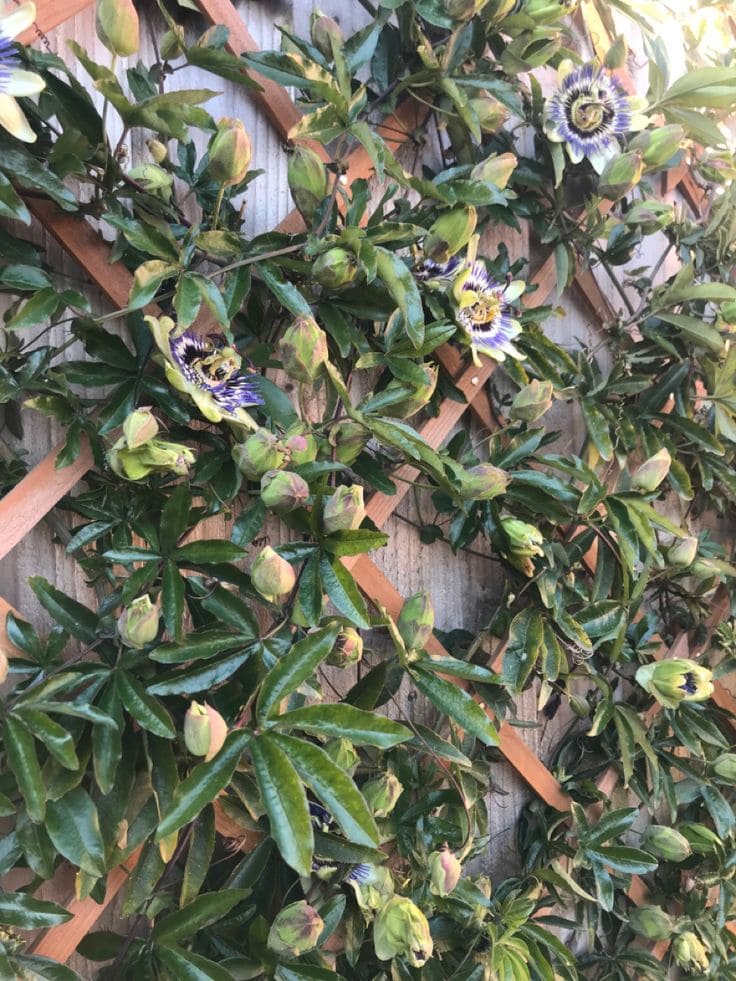
- Botanical name: Passiflora incarnata
- Growth rate: 10-20 feet in one season
- USDA hardiness zones: 6-10
- Growth habit: Twining perennial vine
Passionflower is one of the most mesmerizing vines I grow. It’s fast-growing, especially once the roots are established, and climbs any trellis or arbor with ease.
It loves full sun, but mine grows just fine in part shade too. It prefers moist, well-drained soil, and appreciates a bit of mulch in summer heat.
I prune it in late winter to keep it manageable and promote fresh growth. Not only does it add exotic beauty, but it also attracts butterflies, especially Gulf Fritillaries.
In warmer zones, it may spread via underground runners, so keep an eye on its boundaries. I like planting it along fences where it can roam a bit as it fills in quickly and turns a dull wall into a tropical showpiece.
6. Honeysuckle
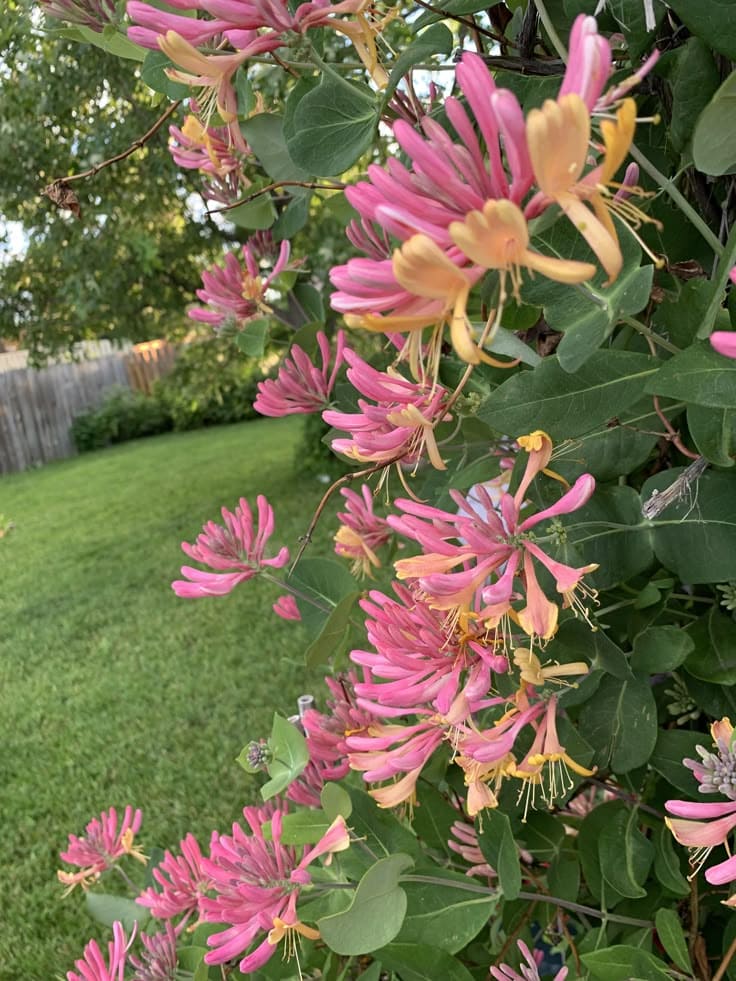
- Botanical name: Lonicera spp.
- Growth rate: 15-20 feet per season (some faster)
- USDA hardiness zones: 4-9
- Growth habit: Twining perennial vine
Few vines are as nostalgic as honeysuckle. Its sweet, heady fragrance drifts on warm summer evenings, and its tubular blooms ranging from creamy white to deep coral are a magnet for hummingbirds.
I’ve planted it near seating areas just for that scent. It grows fast, especially in full sun, and can quickly cover a trellis, arch, or even an old fence.
Honeysuckle prefers well-drained soil and moderate watering but adapts easily once established. Prune it regularly to shape and control spread as it can get unruly if left alone.
I recommend sticking to non-invasive cultivars like Lonicera sempervirens or Lonicera periclymenum. These varieties grow with enthusiasm but won’t choke out natives.
7. Wisteria
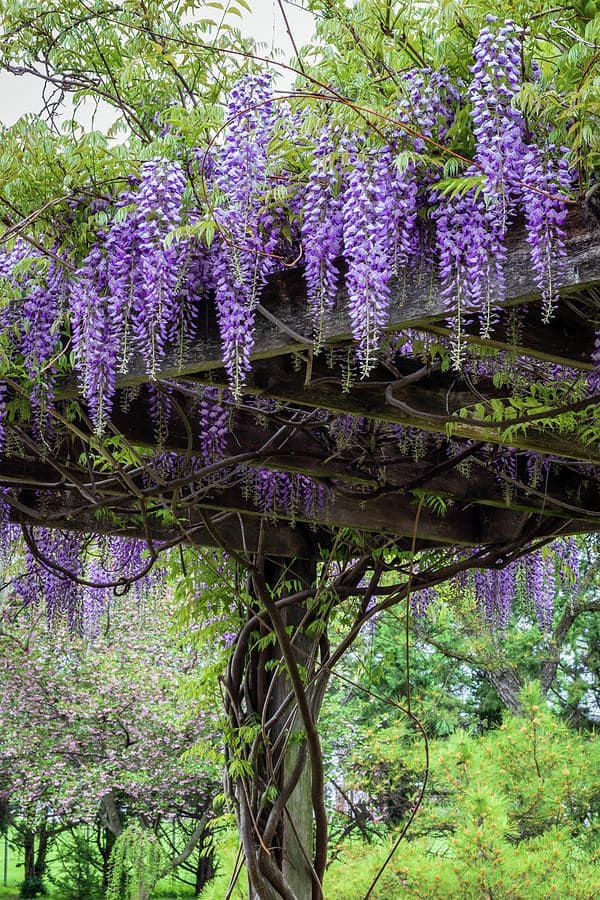
- Botanical name: Wisteria sinensis, W. floribunda
- Growth rate: Up to 10 feet per year (vigorous)
- USDA hardiness zones: 5-9
- Growth habit: Twining woody perennial vine
Wisteria is an absolute showstopper when in bloom, cascades of lavender, blue, or white flowers spill down like floral waterfalls. Besides, wisteria is one of the most powerful growers on this list.
It needs a very sturdy trellis or arbor, ideally made of metal or thick wood. Full sun is a must for flowering, and it does best in fertile, well-drained soil. I prune mine twice a year, once after blooming and once in winter to keep it trained and in check.
Japanese (W. floribunda) and Chinese (W. sinensis) types are both stunning, though the native Wisteria frutescens is a better-behaved option. If you’re patient the first few years, it’ll reward you with jaw-dropping beauty for decades.
8. Sweet Pea
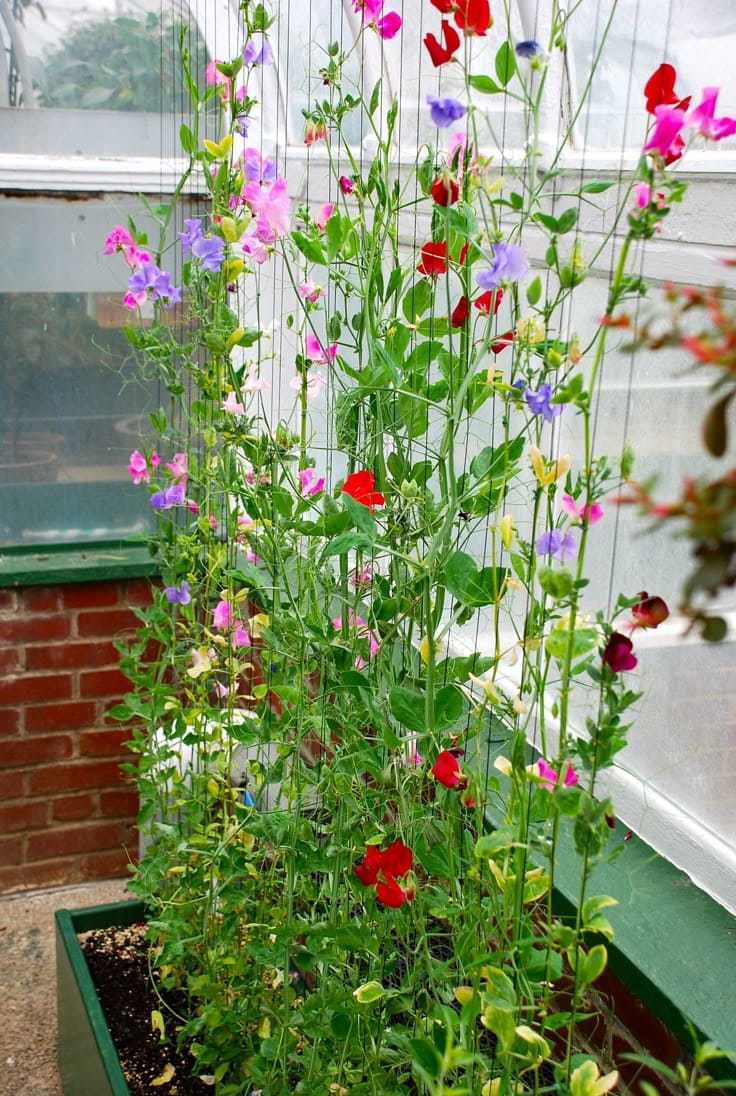
- Botanical name: Lathyrus odoratus
- Growth rate: 6-10 feet in one season
- USDA hardiness zones: Grown as annual in zones 2-8
- Growth habit: Climbing annual vine (tendrils)
Sweet peas are like little love letters from the garden. They climb gently with delicate tendrils, offering soft, ruffled flowers in pastel shades and an unforgettable fragrance.
I always start them from seed in late winter or early spring as they grow fast in the cool months and are usually done by midsummer.
They prefer full sun and rich, cool soil, so mulch around the base to protect roots. You should provide a net, teepee, or wire frame to climb and deadhead often for more blooms.
I plant them along the front porch each year, and every time they bloom, they remind me to slow down and enjoy the garden’s simpler pleasures.
9. Virginia Creeper
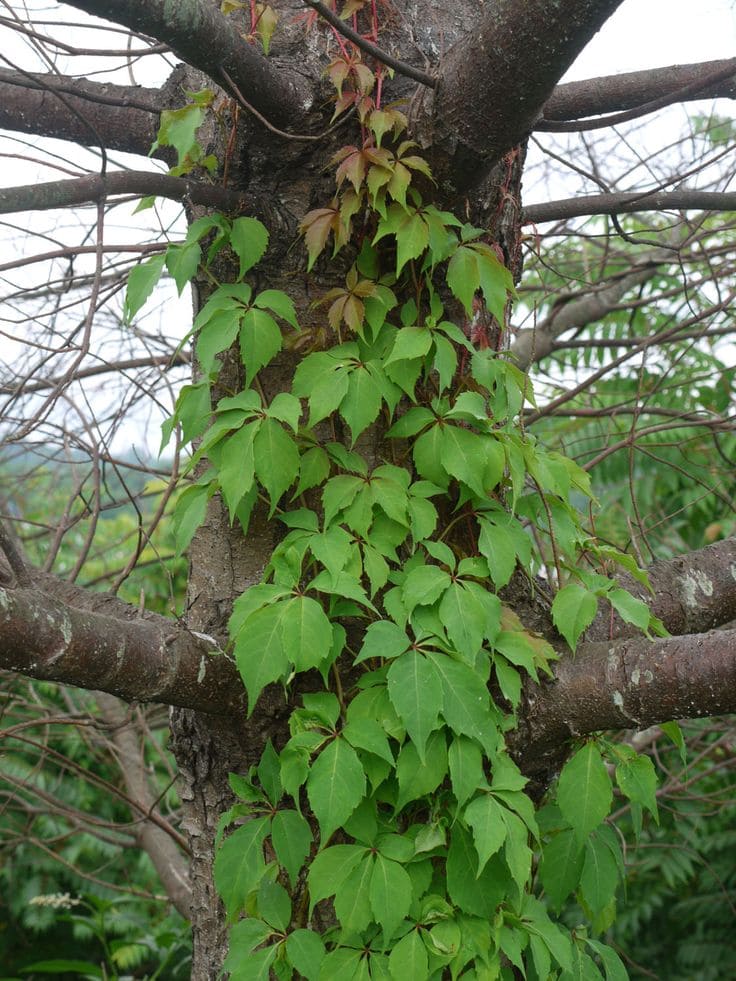
- Botanical name: Parthenocissus quinquefolia
- Growth rate: 30-50 feet in a few seasons
- USDA hardiness zones: 3-9
- Growth habit: Clinging woody perennial vine
Virginia creeper is one of the quickest and toughest native vines out there. With five-fingered green leaves that turn brilliant red in fall, it can turn a plain wall or old fence into a vertical tapestry.
It clings with suction-like pads and doesn’t require tying or training, though I sometimes guide it early to help it spread where I want.
Additionally, it thrives in sun or shade, dry or moist soil, and grows like it has something to prove. Minimal pruning is needed, except to keep it within bounds.
I recommend avoiding planting it too close to wooden siding or roofs, as it can sneak into cracks. Otherwise, it’s a gorgeous, wildlife-friendly, low-maintenance option for fast coverage.
10. Bougainvillea
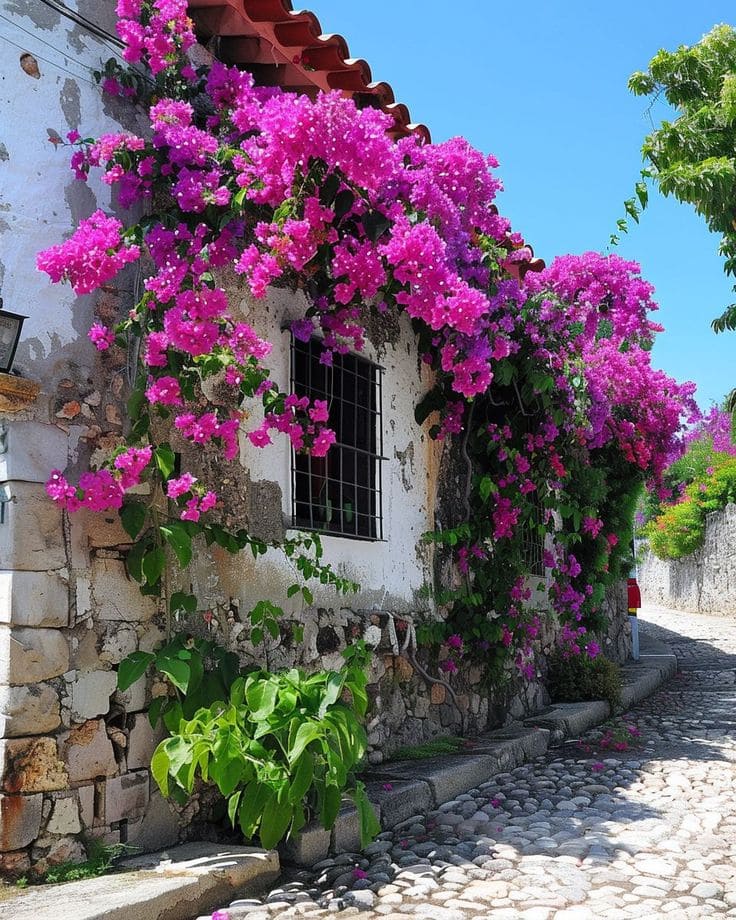
- Botanical name: Bougainvillea glabra, B. spectabilis
- Growth rate: 20-30 feet in warm climates
- USDA hardiness zones: 9-11
- Growth habit: Climbing shrub-like vine with thorny stems
If you’re in a warm climate and want instant color, Bougainvillea is hard to beat. It’s not a true vine but it can be trained on trellises, arbors, and walls with dramatic results.
The brightly colored flowers are actually bracts, surrounding tiny white blooms, and they come in hot pink, red, orange, purple, and more. Bougainvillea thrives in full sun, poor soil, and heat, it actually blooms better when slightly stressed.
I always warn gardeners: wear gloves. The stems are thorny, and it’s vigorous. But once it’s established, you’ll barely have to water or feed it. Just trim to shape and enjoy the non-stop tropical display.
